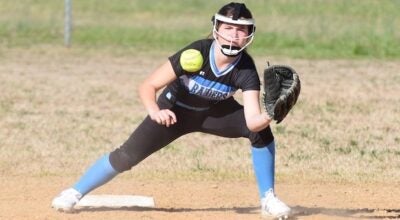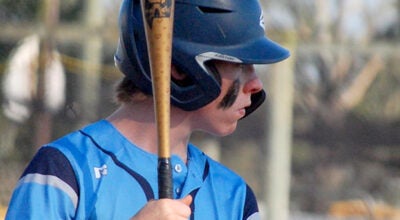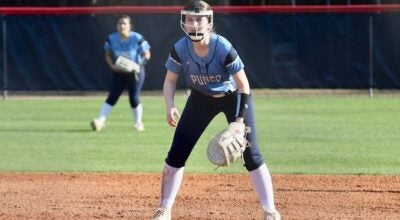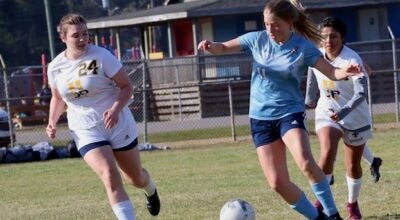COLUMN: Playing soccer with your hands
Published 2:23 pm Tuesday, October 7, 2014
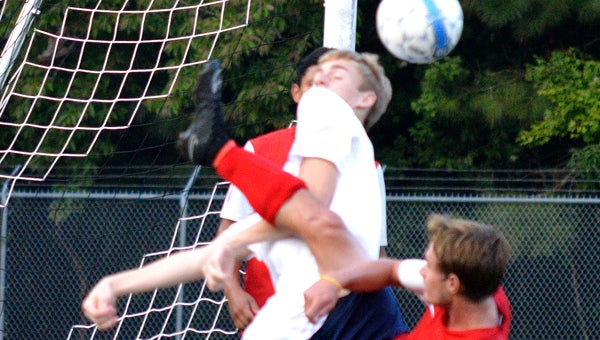
DAVID CUCCHIARA | DAILY NEWS
SMART SOCCER: A West Craven defender attempts to clear the ball in his own penalty area by high kicking towards the face of Washington defender Holt McKeithan. What should have been an indirect free kick inside the box, was not called.
In a region where high school soccer takes a backseat to sports like football, baseball and basketball, the quality of officiating seems to have fallen by the wayside.
There’s’ been a little bit of everything this soccer season — apathetic positioning, game-altering calls (or no-calls) and even referees spurting off explanations entirely absent from the rulebook.
Of course, you have to give credit where credit is due. There have been a few individuals who have gotten it right. When Pungo and Terra Ceia squared off in Pantego on Aug. 29, there were two officials (understaffed) who called the game brilliantly, swallowing the whistle when needed, giving correct, concise explanations of all calls and, most importantly, having the guts to make a controversial (but again, correct) call when a play warranted one. Two kicks right on the edge of the 18-yard box were granted during that game. Not one person, including myself, had any reason to question the rulings.
Having spent years as a baseball umpire, I’m aware perfection is unachievable while officiating a sporting event, no matter the venue, stage or age level. But when a problem is so widespread among a single sport in a specific region, there comes a point when something needs to be done, especially when the soccer rulebook is minuscule compared to that of baseball of football.
Three calls, relatively common across soccer, are the handball, dangerous play and penalty kick. All three can be difficult to call, depending on the weight of the situation and visual angle, and they can intertwine in some instances. This season, there’s been the standard amount of these infractions, but a serious lack of whistles.
Players are getting away with rampant handballs and overly dangerous plays, so much so that the rules have become virtually extinguished from the field of play.
Two games within 24 hours of each other perfectly illustrated the ineffectiveness that is not only hurting the quality of the game, but also putting players at risk of injury.
On Oct. 1, Southside was tied with Bear Grass after 40 minutes of play. Ten minutes into the second half with the score still tied, the Seahawks’ Fabian Ramirez blasted a shot from just outside the box. In what may or may not have been a visceral reflex, a Bears defender fully extended his arm, blocking the shot from having any chance at finding the back of the net. Every person sitting in the stadium, on the bench or standing on the sideline saw the play unfold, except, apparently, the referee, who was standing just 10-15 yards away from the play.
A penalty kick is a tough call to make, but in this instance, the no-call is unacceptable and could have changed the landscape of the contest. Head coach John Lohman received a yellow card for arguing. In terms of the rules pertaining to sportsmanship, the card was most likely warranted, though, Lohman definitely had a case.
A day after the incident, Washington squared off with West Craven. In a two-goal game in the first half, defender Holt McKeithan ran across the box on a corner kick. McKeithan, who had an excellent look on net, all of a sudden found himself starring straight at the spikes on an opponent’s cleat, which came inches from his face. The West Craven defender was behind McKeithan at the time, and his only option at saving a goal was a high kicking to attempt a clearance.
Again, everyone in the complex seemed to react to the play, but no call was made. What should have been an indirect kick inside the box was completely overlooked. To make matters worse, minutes later, an Eagles defender committed another dangerous play just outside the box. Again, no whistle.
Suddenly, what was originally perceived as simply missing a call was now a question of whether or not the referee knew the rule. While he didn’t receive a yellow card, Kozuch had a quiet word with the official at halftime.
And that’s just two games in a 24-hour span. Luckily, in both instances, neither call had any impact on the game’s outcome.
As a sports reporter who has spent the last two months covering high school soccer, I’ve seen one penalty kick, no dangerous plays called and can count the number of handball generated whistles on one hand.
Coaches like Kozuch and Lohman spend many hours each week preparing for an 80-minute soccer game. Washington, specifically, has aspirations of not only a conference championship, but a state title.
Being a former official, I know there’s nothing more a referee (or umpire in my case) wants than to get every call correct. I know the verbal abuse these men and women take almost every game. And I know that one person can’t see everything that happens on a soccer field.
But what’s it going to take to help these referees get handball and dangerous play calls right on a consistent basis? Like so many other things in life, will one overwhelming and unfixable error be the catalyst that prompts action? Because that’s one error Kozuch and the Pam Pack currently cannot afford.


